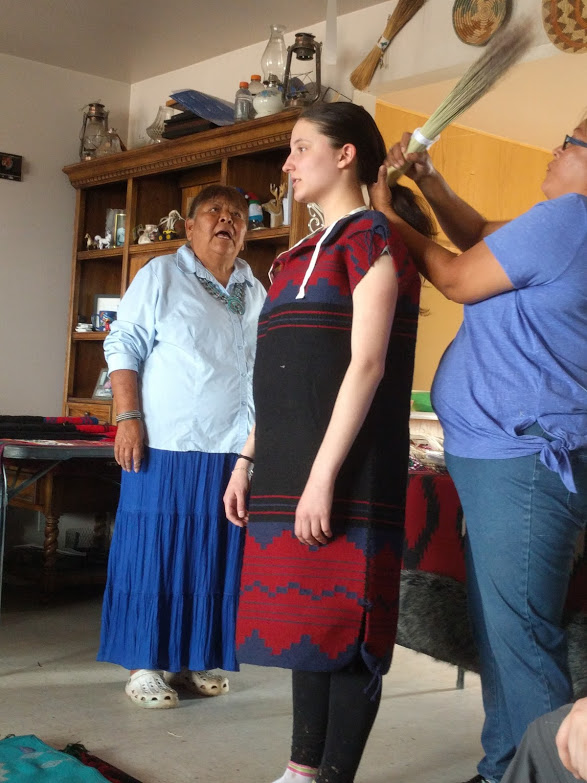|
This past May, Joseph Croskey, Director of University Advising Services Center and assistant professor, took a group of students to the Navajo Nation has part of a service and learning experience.
The trip was run in partnership with IUP. Students from both schools had the opportunity to sign up and travel with the class.
"Dr. Melanie Hildebrandt is a professor of sociology from IUP. She goes every other year to the Navajo Nation so that students can learn about the culture and kind of the things that go on there as well as to provide some service to people and organizations in the Navajo Nation and it's just a big learning experience for everybody," Croskey said.
The group not only experienced the culture but performed a variety of service projects in both Arizona and New Mexico.
"One project we worked on was that they wanted to expand a sweat lodge. We leveled out some ground next to the current sweat lodge and by leveling the ground, they will be able to put another sweat lodge so they can run two groups concurrently. Right now, men and women go separately. Instead of making them wait they can both go in at the same time and be a more efficient process," Croskey said.
Another project that the group assisted in was the maintenance of a women's shelter. They sorted through donations and helped go through recently damaged goods from a rainstorm.
"The women's shelter had gone through different philosophies and settled on a blend of western and traditional philosophies to help the women, but part of their helping includes they can work at the shelter until they start to get some job skills or they can get another job somewhere else," Croskey said.
|
The group was also able to take in the culture and sites while out west. They participated in ceremonies, saw the Grand Canyon, and saw Native American petroglyphs.
"I learned so much on this trip from culture to how they live, what food they eat, ceremonies, but the biggest thing for me was I learned to not stereotype these people. The Dine people live just like you and me with schools, hospitals, stores, colleges, they just hold onto their culture a lot and are very proud of it. I also learned that even though they have all the tools to survive they are still struggling. Most people have running water and electricity but some do not. I do not take anything for granted now because some people always have it much worse," Sarah Watters said, a Clarion University student who participated in the trip.
The experience changed the way the group viewed the Native Americans and other people in general.
"The experience changed my way of thinking about Native Americans and people on the reservation. Navajo people are very welcoming and want you to learn about their culture. People place such harsh stereotypes on these people that are so far from the truth. I have learned to not judge anyone before getting to know a person," Watters said.
"They are working hard now to retain and restore the native language, the native heritage and traditional things that have kept their culture strong but that's a battle. They are battling all of the forces of comfort and easy life and Anglo-world," Croskey said.
Both Croskey and Watters made it clear that trips like this are very important, not only as a learning experience but as a way to understand another culture.
"Some of the things that come out of that are we can talk a little bit more accurately about the Navajo Nation and some other Native American experiences, primarily the Navajo and share their stories," Croskey said.
"Study trips like this are so important because they get you out of your comfort zone and make you push yourself to your learning edge. Learning is so much fun and whenever you can get out of the classroom and visit different places like I did, it is a completely different type of learning," Watters said.
"Our struggles seem worse than or harder than others, so we can more accurately gage your own struggles and challenges," Croskey said.
Croskey said that he intends to take a group of students back to the Navajo Nation next May. He wants to broaden the trip to more schools such as Slippery Rock and Edinboro in hopes of expanding this service and learning opportunity.

